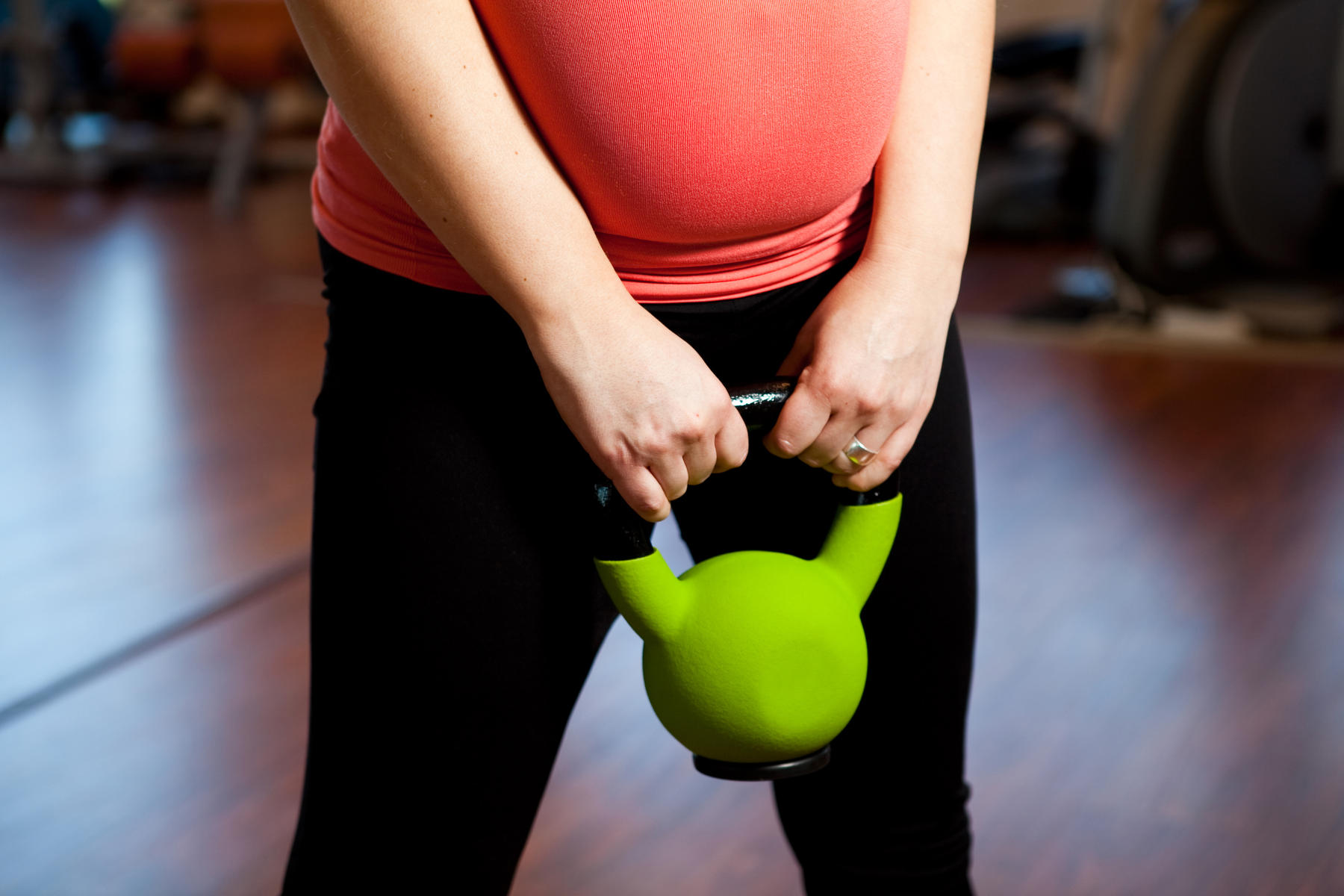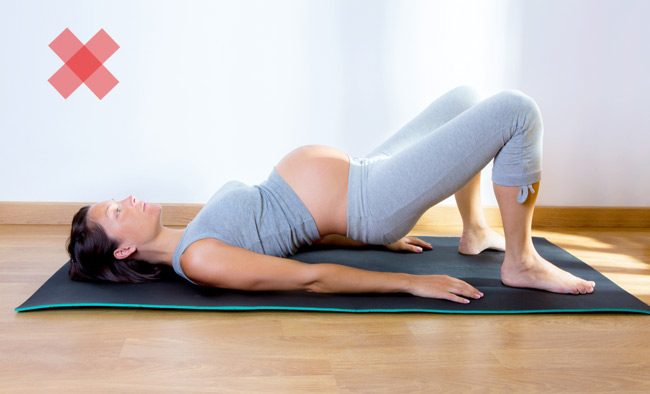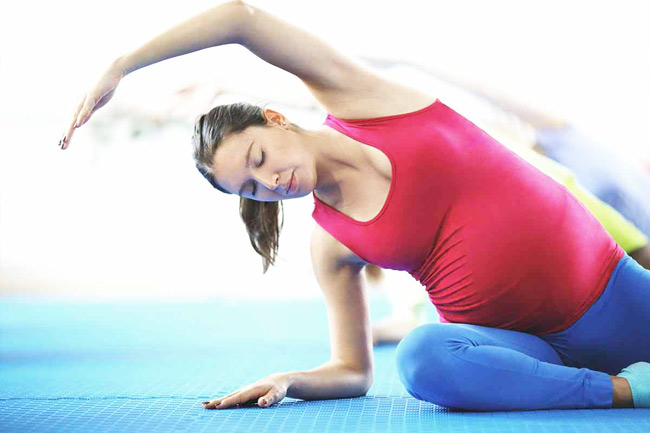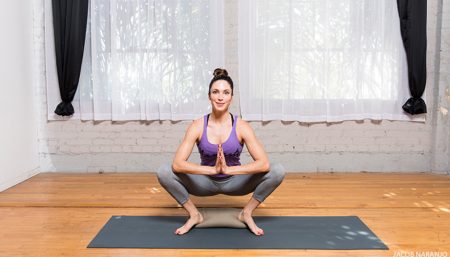
There is no doubt about it – pregnancy is physically demanding! Regular exercise is an essential way of helping your body cope with the increased demands on your joints, muscles, heart and lungs. A low risk pregnant woman should engage in moderate intensity exercise for 30 minutes a day, 4 times a week.
Low risk pregnancies are those which are not otherwise constrained by medical or obstetric complications.
Exercises To Avoid During Pregnancy to minimize risk to your baby.
![]() Heavy weights: Lifts performed with heavy weights that involve maximal isometric muscle contractions are thought to put too much stress on the cardiovascular and musculoskeletal system.
Heavy weights: Lifts performed with heavy weights that involve maximal isometric muscle contractions are thought to put too much stress on the cardiovascular and musculoskeletal system.
![]() Sports that involve impact and potential falling risk should be avoided during pregnancy including skiing and horseback riding. Soccer, basketball and football also increase injury and impact risk and should be avoided
Sports that involve impact and potential falling risk should be avoided during pregnancy including skiing and horseback riding. Soccer, basketball and football also increase injury and impact risk and should be avoided

![]() Exercises that involve lying on your back are off limits after the first trimester, since the position could cause the weight of your enlarging uterus to compress major blood vessels and restrict circulation to you and your baby, while making you feel nauseous, dizzy and short of breath.
Exercises that involve lying on your back are off limits after the first trimester, since the position could cause the weight of your enlarging uterus to compress major blood vessels and restrict circulation to you and your baby, while making you feel nauseous, dizzy and short of breath.
![]() No to Bouncing – especially star jumps, or similar activities: Since your ligaments are already looser, pregnancy isn’t the time to force a split or progress your yoga practice. If something hurts, stop! Yoga asanas involving standing on one leg for a period of time. Although aerobics is perfect safe so as long as you’re comfortable. Prolonged bouncing can overstretch the pelvic floor muscles.
No to Bouncing – especially star jumps, or similar activities: Since your ligaments are already looser, pregnancy isn’t the time to force a split or progress your yoga practice. If something hurts, stop! Yoga asanas involving standing on one leg for a period of time. Although aerobics is perfect safe so as long as you’re comfortable. Prolonged bouncing can overstretch the pelvic floor muscles.
![]() Any activities which require changes to the centre of gravity should be avoided as this can cause balance problems. This includes vigorous racquet sports such as squash and tennis.
Any activities which require changes to the centre of gravity should be avoided as this can cause balance problems. This includes vigorous racquet sports such as squash and tennis.

![]() Avoid holding your breath while exercising during pregnancy – both you and your baby need a constant flow of oxygen.
Avoid holding your breath while exercising during pregnancy – both you and your baby need a constant flow of oxygen.
![]() Sports at altitude should be avoided as they may induce altitude sickness which in turn can reduce the oxygen supply to the foetus. This does not appear to be the case for moderate intensity exercise at altitudes anywhere up to 2,500m but if you want to exercise at altitudes above this upper limit you should be guided through appropriate acclimatisation and make modifications to you activities as guided by your doctor. If you experience symptoms of altitude sickness including excessive shortness of breath, chest pain and light-headedness and weakness, you must stop exercising immediately and seek medical aid.
Sports at altitude should be avoided as they may induce altitude sickness which in turn can reduce the oxygen supply to the foetus. This does not appear to be the case for moderate intensity exercise at altitudes anywhere up to 2,500m but if you want to exercise at altitudes above this upper limit you should be guided through appropriate acclimatisation and make modifications to you activities as guided by your doctor. If you experience symptoms of altitude sickness including excessive shortness of breath, chest pain and light-headedness and weakness, you must stop exercising immediately and seek medical aid.
![]() Contact sports and high-impact sports such as ice hockey, soccer and basketball can risk abdominal trauma, excessive joint stress and falls.
Contact sports and high-impact sports such as ice hockey, soccer and basketball can risk abdominal trauma, excessive joint stress and falls.

![]() Pushing off with one leg at a time when swimming – try to push off with both feet when you turn at the end of the pool. Also, avoid excessive breaststroke at the end of your pregnancy, as this puts stress on your pelvis.
Pushing off with one leg at a time when swimming – try to push off with both feet when you turn at the end of the pool. Also, avoid excessive breaststroke at the end of your pregnancy, as this puts stress on your pelvis.
![]() Toe pointing during pregnancy can lead to cramping in the calves. Flex your feet, instead, driving the top of the foot toward the calf
Toe pointing during pregnancy can lead to cramping in the calves. Flex your feet, instead, driving the top of the foot toward the calf
Always listen to your body during pregnancy.
Idle would be to use “Rate of Perceived Exertion” scale. Think of a scale that goes from 6 to 20, where at 6 you’re snoozing on the couch and at 20 you’re working out as hard as you can. Your goal is to keep your exertion rate between 12 and 14 on that scale – as if you were walking briskly. Still too complicated? Just remember the “talk” test: You should be working hard enough so that you feel yourself breathing more heavily, but you should never be so out of breath that you aren’t able to talk, sing or whistle while you work.
Note: Look out for certain warning signs, including sharp pain, shortness of breath, faintness, vaginal bleeding, dizziness or contractions. If you experience any of these symptoms, avoid exercising during pregnancy immediately and give your practitioner a call.
Disclaimer
The Content is not intended to be a substitute for professional medical advice, diagnosis, or treatment. Always seek the advice of your physician or other qualified health provider with any questions you may have regarding a medical condition.


